Intro Green Energy
Green or Renewable Energy
Renewable Energy is energy that comes from renewable resources such as sunlight, wind, rain, sea tides and hot springs. Renewable sources of energy can be harvested at a rate much faster than the rate of human consumption, which means we will never run out of them. All renewable sources of energies are a result of the sun, be it

WIND: Wind blows due to the difference in air pressures which is caused due to differential heating by the sun,in different parts of the world
SOLAR: Solar energy directly harvested to be used for heating or producing electricity
GEO-THERMAL: Stored solar energy
TIDES/WAVES: Tides/Waves are produced as a result of the gravitational pull between the earth and the moon and the sun.
Conventional Sources of Energy and their cons
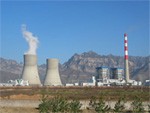
We are very familiar with the conventional resources of energy since we have been using these predominantly. Two key issues associated with this segment of resources are:
All these sources are limited to the reserves that we have and eventually are going to run out. It is a matter of decades or a few centuries at best.
Secondly all the conventional options are polluting in nature either in form of Carbon emissions or radioactive wastes. The Carbon emissions affect our biosphere by creating an imbalance in CO2/CO vs. rest of the gases ratio. This results in higher absorption of the heat emitted by earth (that is received from Sun’s radiation) which in turn is called “Global Warming”. The Radioactive wastes on the other hand result in polluting earth by its residual radioactive emissions. All the wastes have a long life of decaying thus the harmful material has to be contained for a long time to avoid any contact.
The Renewable Energy includes sources of power such as:
- Solar: that includes Heating and Photo-voltaic
- Wind: Big wind and Micro wind
- Sea: Wave and Tidal
- Hydro: Big Hydro-electric and Micro-Hydro
- Geothermal
- Biomass
- Bio-Fuel: Bio-Ethanol and Bio-Diesel
1 Solar PV Basic Principal :
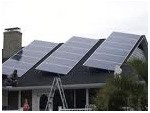
Solar Radiation contains a wide spectrum Electromagnetic Radiation. This radiation is received by earth continuously. There are substances upon which when such radiations falls, electromagnetic potential difference is created across their surfaces. When this apparatus is connected to a circuit electricity is generated. Though such potential is small but when a grid of such surfaces is made substantial current is generated. This is called Photovoltaic effect.
Now during the day time in a country like India where 300 days annually are sunny, such opportunity of Solar PV is very potential. Solar PV system consists of basically Solar Panels (that generate The Electric Potential), a charge controller (that passes this charge to storage batteries) and a storage battery. Once the battery is charged it is connected to a load through an inverter. Such systems are used right from individual set-ups to big Grid farms and can be connected to the Power grid. Normal Silicon wafer (one such Solar PV material) can generate about 24% conversion efficiency
1.1 Solar Thermal: One portion of the solar radiation including the Infra-red zone contains lots of heating element and when such radiation comes in contact with suitable receptors then heat is imparted from the radiation to the collectors. Such heat, by the help of heat exchangers, converts workable medium to generate power. Hot water (normally between 70-80 deg. Celsius) can also be used for heating buildings, pools. When used with a concentrator, it can generate steam which in turn is used in engines and turbines to generate power. In India as mentioned above there is a huge potential of Solar thermal. Even in diffused light the solar energy can be harnessed for its heating properties.
1.2 Multi Junction/Layer Solar PV materials are now available, that have increased the conversion efficiencies close to 40%. Cost is one of the main challenges currently but it is a matter of time when such technology would be comparable to the Grid power cost.
2 Wind Power :
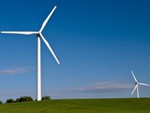
Another form of most prevalent natural resource. It is abundantly available. It is estimated that current potential of total Wind Power is… “Globally, the long-term technical potential of wind energy is believed to be five times total current global energy production, or 40 times current electricity demand. This could require large amounts of land to be used for wind turbines, particularly in areas of higher wind resources. Offshore resources experience mean wind speeds of ~90% greater than that of land, so offshore resources could contribute substantially more energy.” As we move go to higher altitudes the potential further goes up.
2.1 Big Wind Turbines are mostly used either on shore or off-shore. These are generally of 100 kW and bigger in size and are connected in a grid form to feed into the main Power supply lines through suitable synchronizers.
2.2 Small or Micro wind turbines are machine of a few 100 watts to 100 kw in size and are most used for individual set-ups from small yachts to individual homes and small off-grid sites.
3 Wave/Tidal :

This form of energy is generated from the motion of the waves and tides through suitable buoyant floats. These are couples to increase the forces tremendously which drive turbines to generate power. Usually the countries have a long coast line and turbulent currents have a good potential. Portugal has already set-up some big projects harnessing the Tidal Power.
4 Hydro Power :
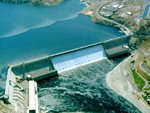
his is also a clean form of Energy but associated where such potential such as big rivers with huge water flow capacity and also favorable geographical terrain exists. India we are fortunate to have big rivers, Ganga, Yamuna, Bramhputra, Krishna, Kaveri. These rivers have a big catchment area and have a constant flow of water as some of these originate from Himalayan Glaciers. This water is then trapped to create huge reservoirs creating hydrostatic potential. When guided water stream at high pressure runs through water turbines, electricity is generated. In India more than 35% of nation power is generated from such sources.
4.1 Big Hydro: these are Mega watt systems that generate power to be connected to national grids. Usually these stations involve huge reservoirs which lead to displacement of populations in order to store huge quantities of water. This involves complex planning and big investments
4.2 Micro Hydro: The basic principal is the same as 4.1 but here the size is only up to a few Kw systems and usually is installed in narrow streams of water or small catchment areas. Micro hydro does not require big dams to be built. It is a low cost independent system that can be used for an individual to cluster users directly connected through a suitable interface.
5 Geo Thermal :

There are certain regions which have a string of hot air or steam geysers. Such hot air or steam is captured and converted into a working medium through suitable heat exchangers to generate power. Countries such as Egypt have a good potential of Geo thermal power.
6 Bio Mass :
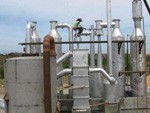
Historically Bio-Mass has been one of the most prevalent and used form of renewable energy. Energy is produced by burning combustible material such as wood chips, dry leaves etc. While there is plenty of supply of such material but its overuse can lead to an ecological imbalance. As long there is continuous generation of such material and green cover is being created, there is no issue. But presently, the green cover and forest area is shrinking at an alarming rate.
Bio-mass as a renewable source of energy has to be critically reviewed. In India, due to easy availability of forest wood, the locals continue to erode the green cover and pose serious threat to the environment.
There is additional issue of the carbon footprint with Bio-Mass since this process of conversion generates a lot of carbon dioxide which causes global warming.
7 Bio Fuel :

When Bio-degradable material is converted into fuels that can be used in vehicles and/or combustible engines then these generate power which is called Bio-fuel Power. Ethanol and Bio-diesel are the two most common forms of manufactured bio-fuels.
7.1 Ethanol is produced mainly from Maze and Sugarcane. Countries in Latin America including Brazil are the forerunners in this technology. Ethanol is produced to be used in automobiles instead of fossil fuels. This process does however has a potential problem. It affects the local food chain and the ecological balance of the region. Thus the viability of this process still needs to be evaluated critically.
7.2 Bio-diesel is produced from plants such as Jatropa. It is grown in open and waste lands. It requires less maintenance and usually is a good option for producing Bio-Diesel which is then mixed in certain ratios with fossil fuel.
As described above, the list of renewable energies is long and full of possibilities. Even the technologies supporting them have been continually improving. I think the time has come when people would begin to start refering to these energies as the conventional sources of energies. The world should stop depending on the polluting sources of energies of the past for all the energy needs now that we have cleaner and greener alternatives. These Green sources of power and energy would fuel the machinery of the future. fuel.